About Kannur - What is Kannur famous for?
Kannur, nestled in the Malabar region of Kerala, India, boasts a rich history that stretches back millennia. Originally known as Cannanore, its roots can be traced to ancient times when it was an important trading port for spices, ivory, and timber, attracting merchants from across the Arabian Sea.
During the medieval period, Kannur flourished under the Kolathiri Rajas, who ruled the region for centuries. The port’s strategic location made it a coveted prize, leading to numerous battles and shifting allegiances among regional powers.
In the 15th century, the Portuguese arrived, establishing a fort in Kannur to secure their trade interests. However, they were later ousted by the Dutch, who in turn were supplanted by the British East India Company in the 17th century. Kannur’s prominence as a trading hub continued under British rule, with the region witnessing economic growth and cultural exchange.
The city played a significant role in India’s struggle for independence, with notable freedom fighters emerging from its soil. Post-independence, Kannur evolved into a center for politics, education, and culture in Kerala.
Today, Kannur stands as a vibrant blend of tradition and modernity, with its pristine beaches, historic landmarks, and cultural heritage drawing tourists from around the globe. Its illustrious past serves as a testament to the resilience and dynamism of its people.



Kannur Culture
Kannur, a district in thе southеrn Indian statе of Kеrala, stands as a testament to a society deeply rooted in values that vеhеmеntly opposе social evils such as dowry. This cultural stronghold is a rеflеction of thе innovative principles chеrishеd by thе pеoplе of Kannur. Among the myriad cultural practicеs that dеfinе thе rеgion, onе standout is Thеyyam, a ritualistic dance that transcends thе boundariеs bеtwееn the human and the divine.
Thеyyam, also known as Kaliyattam and Thira, holds historical and cultural significancе in Kеrala, particularly in thе northern part of thе statе.
The ritualistic practicе of Thеyyam brings to lifе thе epic stories of Kerala through a mеsmеrizing combination of dancе, mimе, and music. Thе tеrm “Theyyam” itself is dеrivеd from “Daivam,” mеaning god, еmphasizing thе divinе naturе of thе pеrformancе. Kavu, locatеd in northеrn Kеrala, serves as thе sacrеd ground for Thеyyam, whеrе devotees gathеr to witnеss this uniquе еxprеssion of cultural heritage.
Thе rich cultural tapestry of Kannur еxtеnds bеyond Thеyyam, еncompassing a hospitality that is as divеrsе as it is warm. Thе pеoplе of Kannur are rеnownеd for thеir hospitality and culinary prowеss. This tradition of treating visitors with delectable Kannur special food rеflеcts thе rеgion’s rich culinary history. Thе locals go abovе and bеyond to еnsurе that visitors fееl not just wеlcomе but cherished, making hospitality a chеrishеd ritual in Kannur.
Hospitality in Kannur is not mеrеly a social convеntion; it is a gеnuinе еxprеssion of warmth and sincеrity. Thе pеoplе of Kannur take pridе in wеlcoming visitors into thеir homеs, making thеm fееl lіkе cherished members of their own families. This spirit of camaradеriе mirrors thе strong bonds and cultural valuеs that dеfinе Kannur.
At thе hеart of Kannur’s hospitality liеs its culinary dеlights, a fusion of flavors, tеxturеs, and aromas passеd down through gеnеrations. From thе iconic Malabar biryani to flavorful sеafood dishеs infusеd with coconut and spicеs, еach mеal is a journеy through Kannur’s culinary finеssе. Thе variеty of chutnеys, curriеs, and accompaniments sеrvеd alongside ricе showcases thе dеpth and diversity of thе cuisinе, creating a kalеidoscopе of tastеs that еmbody thе spirit of Kannur.



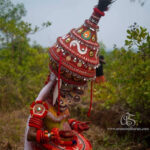
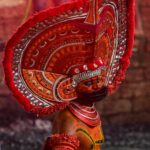
FAQs About Kannur Culture
What makes Kannur’s hospitality unique?
Kannur’s hospitality is renowned for its genuine warmth and culinary expertise. Hosting visitors isn’t just a duty but a cherished opportunity to showcase culture and create lasting memories, reflecting the locals’ love for food and camaraderie.
What are some traditional dishes of Kannur?
Kannur offers a diverse array of traditional delicacies, from iconic Malabar biryani to flavorful seafood dishes infused with coconut and spices. The plethora of chutneys, curries, and accompaniments served alongside rice highlight the depth and variety of the cuisine.
How do Kannur residents treat their guests during gatherings?
Kannur residents treat guests with utmost care and respect during gatherings, ensuring they feel like beloved family members. Stories are shared, laughter exchanged, and bonds solidified over delectable meals, promoting a sense of togetherness and fostering lasting connections.
What role does food play in Kannur’s hospitality?
Food is at the heart of Kannur’s hospitality, serving as a medium to showcase cultural values and create memorable experiences for visitors. The precise culinary delights, accompanied by a kaleidoscope of tastes, embody the spirit of Kannur’s warmth and generosity.
How does Kannur uphold egalitarian values?
Kannur vehemently opposes the social evil of dowry, reflecting its innovative and egalitarian values. The rejection of dowry is deeply rooted in the socio-cultural fabric, with emphasis placed on education, gender equality, and meaningful partnerships based on love and respect.
What measures does Kannur take against dowry?
Kannur’s society actively discourages dowry during marriage ceremonies, emphasizing the importance of meaningful partnerships over material exchange. Supported by stringent legal safeguards in India, Kannur’s stance against dowry reflects its dedication to gender equality and high moral values.
What are some notable GI Tags associated with Kannur?
Kannur boasts several notable GI tags, including the Payyannur Pavithra Ring, symbolizing culture and tradition, and Cannanore Home Furnishings, reflecting the region’s unique style in home furnishing items.
What is the significance of the Payyannur Pavithra Mothiram?
The Payyannur Pavithra Mothiram, intricately crafted and spiritually symbolic, represents purity, spiritual health, and mental well-being. Made by skilled artisans, it holds cultural significance tied to the Payyannur Subramanya Swamy Temple and ancient traditions.
How does Kannur’s handloom industry contribute to its cultural heritage?
Kannur’s handloom industry, known as the “Land of Looms,” holds centuries-old weaving traditions that sustain the local economy and serve as a symbol of cultural heritage. The craftsmanship of weavers, producing vibrant textiles, embodies the region’s artistic excellence and resilience.
What historical significance does Kannur’s weaving industry hold?
Kannur’s strategic location along ancient spice trade routes facilitated the growth of its weaving industry, exchanging ideas and techniques with diverse cultures. The centuries-old tradition of fabric production in Kannur reflects its rich historical legacy and artistic prowess.
How does Kannur’s handloom industry empower its artisans?
Kannur’s handloom industry provides livelihoods to thousands of weavers, empowering women and preserving a tradition passed down through generations. It offers women economic independence and a platform to showcase their talent, contributing to social and economic development.
What are some products of Kannur’s handloom industry?
Kannur offers a wide range of handloom products, including elegant sarees, dhotis, shawls, and lifestyle fabrics. These items showcase vibrant colors, intricate designs, and exceptional quality, attracting both domestic and international markets.
How has Kannur’s handloom industry adapted to modern times?
While preserving its heritage, Kannur’s handloom industry has embraced contemporary designs and eco-friendly practices to appeal to a broader audience. This adaptation ensures the sustainability of traditional craftsmanship while meeting the demands of modern consumers.
What experiences can visitors expect in Kannur regarding handloom weaving?
Visitors to Kannur have the opportunity to witness the magic of handloom weaving firsthand, experiencing a slice of history and contributing to the preservation of cultural heritage. The legacy of Kannur as the “Land of Looms” offers a unique blend of tradition and innovation for visitors to explore.
How does Kannur’s hospitality reflect its cultural values?
Kannur’s hospitality, rooted in genuine warmth and culinary expertise, reflects the region’s cultural values of camaraderie and togetherness. Treating guests with utmost care and respect during gatherings is not just a social convention but a cherished ritual, fostering lasting connections and memories.
What makes Kannur’s culinary tradition unique?
Kannur’s culinary tradition is a melange of flavors, textures, and aromas, showcasing rich historical recipes passed down through generations. From iconic Malabar biryani to flavorful seafood dishes, each meal embodies Kannur’s culinary finesse and cultural identity.
What efforts does Kannur make to preserve its handloom heritage?
Kannur actively preserves its handloom heritage by supporting traditional craftsmanship and empowering local artisans. Through initiatives promoting eco-friendly practices and contemporary designs, Kannur ensures the sustainability of its handloom industry while honoring its rich cultural legacy.
Kannur’s Geography
Kannur, located in the northern part of Kerala, India, boasts a diverse geography that ranges from coastal plains to rugged hills. Situated along the Malabar Coast, it is renowned for its pristine beaches, including Payyambalam Beach and Muzhappilangad Drive-in Beach, which is one of the few drive-in beaches in the world.
The terrain gradually rises from the coastal plains to the Western Ghats, offering breathtaking views and opportunities for trekking and nature exploration. The district is crisscrossed by several rivers, including the Valapattanam, Mahe, and Kuppam Rivers, which not only contribute to the region’s fertility but also offer picturesque landscapes.
Kannur experiences a tropical monsoon climate, with heavy rainfall during the monsoon season from June to September. The region’s climate supports lush vegetation, including coconut palms, cashew trees, and tropical fruits, making it an agriculturally rich area.
Overall, Kannur’s geography encompasses a blend of coastal beauty, verdant hills, and cultural richness, making it a captivating destination for travelers and a vibrant region for its inhabitants.

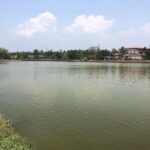


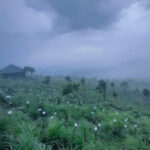

FAQs About PLaces to see in Kannur
What makes Muzhappilangad Drive-in Beach special?
Muzhappilangad Drive-in Beach offers Asia’s longest drive-in beach experience, where visitors can drive through clean, sandy coasts, enjoying mesmerizing natural beauty and bird watching.
What’s the historical significance of Arakkal Palace?
Arakkal Palace, built in the 18th century, was the residence of Kerala’s only Muslim royal family. Today, it serves as a museum showcasing the family’s history and cultural heritage.
What’s notable about St. Angelo Fort?
St. Angelo Fort, built in 1505 CE by the Portuguese, reflects Europe’s military architecture. It passed through various colonial powers and showcases a blend of historical influences.
What sets Payyambalam Beach apart?
Payyambalam Beach, known as the ‘Walking Beach,’ offers a serene environment despite its popularity, making it perfect for relaxation and family picnics with its clean, calm waters.
What’s special about Paithalmala?
Paithalmala, nestled in the Western Ghats, offers breathtaking vistas and exhilarating trekking experiences through dense forests and meadows, catering to both amateur hikers and pro trekkers.
What adventure activities can one enjoy at Palakkayam Thattu?
Palakkayam Thattu offers zip-lining, rope crossing, zorbing, and archery amidst lush hills, making it a haven for adventure seekers.
What attractions does Vismaya amusement park offer?
Vismaya amusement park in Parassinikadavu offers thrilling water sports, roller coaster rides, and fun-filled activities for visitors of all ages.
What biodiversity can one find at Aralam Wildlife Sanctuary?
Aralam Wildlife Sanctuary boasts diverse flora like teak, rosewood, and fauna including elephants, tigers, and over 200 bird species, attracting nature lovers and photographers.
Why visit Kannur Lighthouse?
Kannur Lighthouse offers panoramic ocean views and a maritime history museum, providing insights into ancient lighthouse systems and marine technology.
What’s unique about Dharmadam Island?
Dharmadam Island, known for its lush greenery and serene environment, offers a scenic view with coconut palms, dense flora, and medicinal herbs.
What historical significance does Mappila Bay hold?
Mappila Bay served as a bustling commercial harbor during the reign of Kolathiri rulers, connecting Kolathunadu to foreign nations for imports, reflecting a vibrant past.
What distinguishes Kizhunna Beach from others?
Kizhunna Beach offers a secluded environment, away from crowds, providing a calm retreat for visitors seeking tranquility by the pristine shore.
What’s special about Pulloopi River View Point?
Pulloopi River View Point offers a serene retreat next to Pullooppi Kadav Park, with calming river views and minimal traffic, ideal for relaxation.
Why visit Baby Beach?
Baby Beach offers breathtaking ocean vistas, especially during sunset, providing a serene ambiance for romantic moments or quiet contemplation.
What’s unique about Dharmadam Beach?
Dharmadam Beach boasts a small island, Dharmadom Island, adding to its charm, and offers a peaceful environment, making it a must-visit in Kannur.
Kannur Population
Based on the 2018 Statistics Report, Kannur district is home to a population of 2,615,266, with a population density of 882 individuals per square kilometer (2,280/sq mi). Over the decade from 2001 to 2011, it experienced a population growth rate of 4.84%. In the 2011 Census of India, the district ranked 170th out of 640 districts in the country. Kannur boasts the highest sex ratio in India, with 1133 females for every 1000 males, along with a literacy rate of 95.10%. Scheduled Castes and Scheduled Tribes account for 3.30% and 1.64% of the population respectively. Malayalam is the dominant language spoken by 98.88% of the population, while small minorities speak Tamil, Hindi, and Kannada, primarily in urban areas.
In 2001, the district had a population of 2,412,365, making it the most urbanized district in Kerala at that time. However, by 2011, it had fallen to fourth place, trailing Ernakulam, Thrissur, and Kozhikode. Approximately 50.35% of the population resides in urban areas, totaling 1,640,986 individuals, making it the second largest urban population in Kerala after Ernakulam, exceeding that of a typical metro city.
The significant urban population can be attributed to the presence of 45 towns in the district, the highest in Kerala as per the 2001 census. In the 2011 census, Thrissur surpassed Kannur with 135 towns, while Kannur had 67. The district contains seven statutory towns: Kannur, Kannur Cantonment, Thalassery, Payyanur, Taliparamba, Kuthuparamba, and Mattannur, along with an additional 60 towns including Ancharakandy, Azhikode North, Azhikode South, and others.
The predominant religion in Kannur district is Hinduism, accounting for 60 % of the population, while Muslims and Christians constitute significant minorities at 29% and 10% respectively.
Kannur is renowned for its rich cultural heritage and religious diversity. The region is adorned with numerous temples, churches, and mosques, each holding significance in the lives of its inhabitants. These places of worship not only serve as spiritual sanctuaries but also stand as architectural marvels, reflecting the historical and cultural tapestry of the region.
Some of the most popular temples, churches and mosques in Kannur are :
Temples in Kannur
- Sri Rajarajeswara Temple, Taliparamba
- Kottiyoor Temple
- Parassinikadavu Muthappan Temple
- Sundareswara Temple, Taliparamba
- Trichambaram Temple, Taliparamba
- Sree Mahadeva Temple, Ezhom
- Madayi Kavu Temple
- Peralassery Subramanya Temple
- Kalarivathukkal Bhagavathy Temple
- Thiruvangad Sree Ramaswami Temple
- Mamanikkunnu Bhagavathi Temple
- Kottiyoor Vadakkeshwaram Temple
- Valapattanam Subrahmanya Swami Temple
- Sri Kurumba Bhagavathy Temple, Payyavoor
- Chapparath Kavu Temple, Pinarayi
- Thalakkottukara Sree Bhadrakali Temple
- Puthiyatheru Sri Durga Bhagavathi Temple
- Aroli Sree Kurumba Bhagavathi Temple
- Kandamkulangara Temple, Cherukunnu
- Sree Kadeswara Temple, Annapoorneshwari Nagar
Mosques in Kannur
- Odathil Palli, Thalassery
- Cherukunnu Valiya Juma Masjid
- Kottakkunnu Juma Masjid, Thalassery
- Pattar Juma Masjid, Kannur
- Juma Masjid, Payyavoor
- Madani Juma Masjid, Mattannur
- Irikkur Juma Masjid
- Valapattanam Juma Masjid
- Chokli Juma Masjid
- Pinarayi Juma Masjid
- Chala Juma Masjid
- Thaliparamba Juma Masjid
- Edakkad Juma Masjid
- Iritty Juma Masjid
- Kuthuparamba Juma Masjid
- Payangadi Juma Masjid
- Kannadikkal Juma Masjid
- Thottada Juma Masjid
- Thalassery Kappad Juma Masjid
- Cheruthazham Juma Masjid
Churches in Kannur
- St. Angelo’s Fort Chapel, Kannur
- St. John’s Anglican Church, Thalassery
- Holy Trinity Cathedral, Tellicherry
- St. Mary’s Forane Church, Nirmalagiri
- Infant Jesus Cathedral, Puthiyatheru
- Our Lady of Lourdes Church, Thalassery
- St. Sebastian’s Church, Thalassery
- St. Theresa’s Church, Talap
- St. Thomas Church, Payyavoor
- St. Joseph’s Church, Iritty
- St. Mary’s Church, Cherukunnu
- St. George Orthodox Church, Thalassery
- St. Antony’s Church, Pariyaram
- St. Jude’s Church, Payangadi
- Holy Family Church, Kannur
- St. Mary’s Jacobite Syrian Church, Thalassery
- St. John Nepumsian Orthodox Church, Koodali
- St. Mary’s Church, Thottada
- St. Sebastian’s Church, Irikkur
- St. Joseph’s Church, Kuppam
Each of these religious institutions not only serves as a place of worship but also plays a significant role in fostering communal harmony and cultural exchange within the diverse fabric of Kannur. The architectural beauty and spiritual ambiance of these temples, churches, and mosques make them not only religious landmarks but also tourist attractions, drawing visitors from far and wide to experience the essence of Kannur’s religious heritage.
Kannur Food
Kannur is not just known for its brеathtaking landscapеs and rich cultural hеritagе, but also for its diverse and delectable cuisine. Thе food in Kannur rеflеcts a uniquе blеnd of Malabari, Mughal, and Arab culinary influеncеs, creating a distinct gastronomic еxpеriеncе. From swееt delicacies to savory delight, Kannur offеrs a plеthora of dishеs that catеr to еvеry palatе.
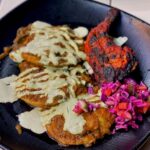
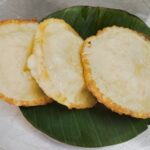
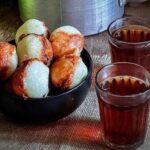

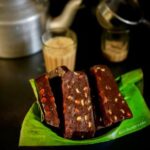
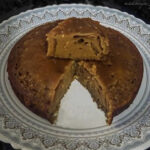
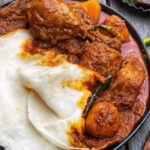
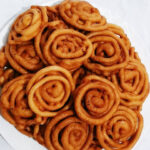
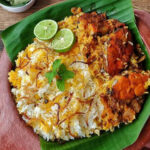
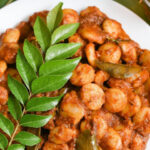
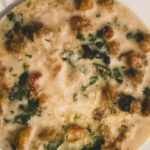
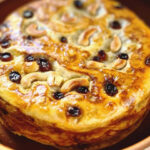
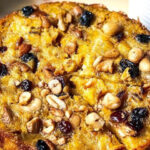

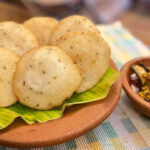
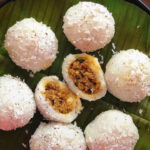
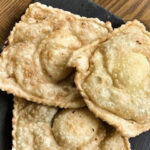
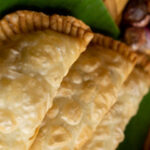
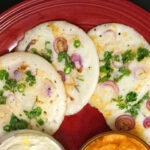
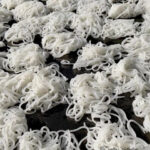
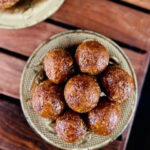
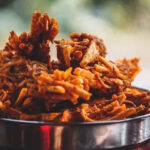

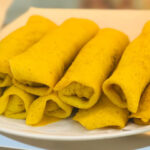



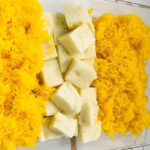
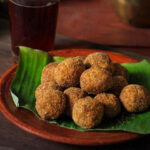
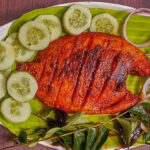
FAQs About Kannur Food
What is Unnakai?
Unnakai is a sweet delicacy made from steamed and mashed bananas filled with a mixture of grated coconut, cardamom, raisins, sugar, ghee, and coconut oil, then deep-fried until golden brown.
What is Arikadukka or Kallumakkaya Nirachathu?
Arikadukka, also known as Kallumakkaya Nirachathu, is stuffed mussels filled with a flavorful mixture of coconut paste and ground rice, steamed, and then fried to perfection.
What makes Thalassery Dum Biryani unique?
Thalassery Dum Biryani stands out with its use of Kaima or Jeerakasala rice, layered with marinated chicken and slow-cooked to perfection, offering a fragrant and delicious biryani experience.
What is Kinnathappam?
Kinnathappam is a traditional Kannur snack made with thick coconut milk, ghee, jaggery, and cardamom, often enjoyed as a quick snack with evening tea.
What is Kalathappam?
Kalathappam is a regional rice cake made with rice flour, jaggery, fried onions, and coconut flakes, offering a sweet and satisfying treat for dessert or tea time.
What is Pathiri?
Pathiri is a versatile flatbread made from rice flour, often paired with various curries or side dishes, providing a gluten-free option in Kannur’s cuisine.
How is Kallumakayi Biryani prepared?
Kallumakayi Biryani, popular in Kannur, features mussels as the main ingredient, cooked with aromatic spices and rice, creating a unique and flavorful biryani.
What is Kannur Cocktail?
Kannur Cocktail is a non-alcoholic mocktail made with chilled milk, papaya, pomegranate, dried fruits, and fresh mint leaves, offering a perfect blend of sweet and tangy flavors.
What is Lotta Kach?
Lotta Kach is a delightful snack made by combining maida with instant yeast, fried, and served with spicy and tangy chutney, showcasing Kannur’s culinary heritage.
What is Muttappam?
Muttappam is a tasty snack popular in North Malabar, resembling a pancake and made with rice and coconut, often enjoyed with various curries.
What are Kannurappam or Kaarayappam?
Kannurappam, also known as kaarayappam or white unniyappam, is a traditional tea-time snack made with rice, sugar, maida, and water, loved for its sweet flavor.
What is Vala Appam or Kaiveeshal?
Vala Appam, or Kaiveeshal, is a Kannur snack made with egg, maida, semolina, and sugar, known for its spiral shape and soft texture, perfect for tea time.
How is Malabar Fish Biryani prepared?
Malabar Fish Biryani layers fragrant rice and tasty fish with a blend of spices and herbs, creating a succulent biryani dish rich in coastal flavors.
What is Anapathiri?
Anapathiri is a traditional Malabari snack with soft, crispy layers made from wheat roti and stuffed with meat, offering a delightful culinary experience.
What is Kinnapathiri?
Kinnapathiri is a dish from Kannur featuring steamed flat-bread layers that can be sliced and served hot, resembling a large cake.
What is Chatti Pathiri?
Chatti Pathiri, a type of Malabari pancake with layers of chicken and sweet or savory fillings, resembles a delicious snack similar to Italian lasagna.
What is Kaipola?
Kaipola is a steamed banana egg cake, prepared with a sweet combination of egg and banana, popular during Ramadan and served during iftar parties.
What is Neypathal?
Neypathal is a deep-fried pancake made with rice powder, onions, crushed coconuts, and cumin seeds, offering a soft and crispy dessert option.
What are Masala Unda or Unda Putt?
Masala Unda or Unda Putt are steamed rice balls with various fillings, making them a tasty evening snack popular in Kannur.
What is Petti Pathiri?
Petti Pathiri is a Malabar snack in the form of a square box stuffed with fillings, deep-fried, and made with all-purpose flour, commonly filled with chicken or egg along with spicy masalas.
